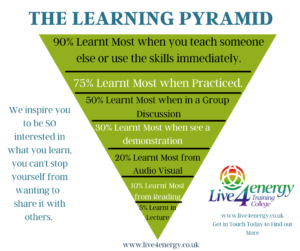Children are naturally curious, eager to learn, and capable of absorbing vast amounts of information at a speed that often astonishes adults. However, this remarkable capacity can be inadvertently stifled by the very people meant to nurture it—adults. Whether due to insecurities, outdated beliefs, or a simple inability to keep pace with modern educational needs, adults can unintentionally slow down a child’s learning journey. This article explores how this happens and what can be done to break the cycle.
The Speed of Child Learning: An Untapped Potential
Children’s brains are like sponges, particularly in the early years, when neural connections are formed at an extraordinary rate. According to research, by the age of five, a child’s brain reaches about 90% of its adult size, with up to 700 new neural connections being formed every second during the early years of life. This rapid development creates a window of opportunity where children can learn new languages, complex concepts, and skills much faster than adults.
However, this innate potential often goes underutilized or even suppressed, not because of the children’s abilities, but due to the limitations adults unknowingly impose on them.

How Adult Insecurities Affect Children’s Learning
- Fear of the Unknown and Resistance to Change
Many adults, especially those who were educated in traditional systems, struggle with new teaching methods and technologies that can enhance learning. They may fear change, preferring to stick to familiar methods that feel safe but are often outdated. This resistance can hinder children from accessing innovative educational tools that could accelerate their learning.
For instance, a parent or teacher might be uncomfortable with a child using tablets or apps for learning because it feels too different from the pen-and-paper methods they grew up with. However, digital learning platforms can offer personalized learning experiences, immediate feedback, and engaging content that suits a child’s pace and interests.
2. Projecting Insecurities onto Children
Adults often project their own insecurities onto children, limiting what they believe children are capable of. For example, if an adult struggled with math in school, they might assume their child will too, perhaps even subconsciously discouraging the child from pursuing it by expressing their own anxieties or by setting low expectations.
This projection creates a self-fulfilling prophecy where the child’s learning is slowed not by their own abilities but by the limitations imposed by adult expectations. Children, especially younger ones, are highly perceptive and can easily pick up on these cues, leading them to doubt their abilities.
3. Imposing Adult Learning Paces on Children
Adults, due to their slower cognitive processing speeds compared to children, often impose their own pace on learning activities. This can be particularly evident in classroom settings where curricula are designed to be “one size fits all,” often tailored more to the comfort of adults rather than the needs of children.
For example, a child might grasp a concept quickly and be ready to move on, but an adult may slow the pace, either because they assume the child needs more time or because they themselves need more time to process the information. This can lead to boredom, frustration, and disengagement in children who are ready to advance but are held back by a slower learning environment.
4. Overprotectiveness and Fear of Failure
Many adults are naturally protective of children and want to shield them from failure or disappointment. However, this overprotectiveness can backfire by preventing children from taking risks, experimenting, and learning from their mistakes—key components of effective learning.
When adults step in too quickly to help or prevent a child from experiencing failure, they inadvertently teach the child to avoid challenges. This can stifle creativity and problem-solving skills, which are crucial for rapid learning and intellectual growth.

Breaking the Cycle: How Adults Can Support Child-Led Learning
Recognizing and addressing these patterns is the first step toward creating an environment where children can learn at their natural, often rapid pace. Here’s how adults can better support children’s learning journeys:
- Embrace Change and Lifelong Learning
Adults need to become comfortable with change and embrace lifelong learning themselves. By staying informed about new educational methods and technologies, adults can better support children’s learning. This might involve taking courses on digital literacy, participating in workshops on new educational strategies, or simply being open to learning alongside children.
2. Foster a Growth Mindset
Encouraging a growth mindset in both adults and children can counteract the negative effects of adult insecurities. A growth mindset is the belief that abilities can be developed through effort and learning. Adults can model this mindset by expressing positive attitudes towards challenges and learning opportunities, and by praising children for their effort rather than just their innate abilities.
3. Allow Children to Set the Pace
Adults can learn to step back and let children lead their own learning whenever possible. This means observing and responding to children’s cues, allowing them to move quickly through material they understand and providing more support only when needed. Educational environments that offer differentiated learning paths can help accommodate different learning speeds, ensuring that no child is held back or rushed through their education.
4. Encourage Risk-Taking and Embrace Failure
Failure is a natural part of learning, and adults should encourage children to take risks and see failure as a valuable learning opportunity rather than something to be feared. By allowing children to explore, make mistakes, and learn from them, adults help build resilience and confidence, key ingredients for rapid and effective learning.

The Role of Energy Therapies and Innovative Learning Models
Combained programs like Live4Energy and ICU Academy offer additional tools for supporting child-led learning and overcoming adult insecurities:
- Live4Energy Techniques: These energy therapies can help adults manage their own stress and insecurities, allowing them to be more present and supportive of their children’s learning. Techniques like TARC EFT / Emotional Freedom Techniques (EFT) can help adults release their fears and anxieties, enabling them to create a more positive learning environment.
– ICU Academy’s Approach: The ICU Academy promotes a child-centered learning model that aligns with the natural pace of each student. By integrating personalized learning plans and energy-balancing practices, ICU Academy helps children thrive without being held back by adult-imposed limitations.
Empowering the Next Generation
To truly unleash the potential of our children, we must first address the insecurities and limitations we as adults might impose on them. By embracing change, fostering a growth mindset, allowing children to set their own learning pace, and encouraging them to take risks, we can create a supportive environment where children can learn as quickly and as effectively as their natural abilities allow.
When adults step back and trust in children’s inherent capacity to learn, we not only accelerate their education but also empower them to become confident, resilient learners who are well-equipped to navigate the challenges of the future. In this way, we can ensure that our own fears and limitations do not become obstacles to the boundless potential of the next generation.
